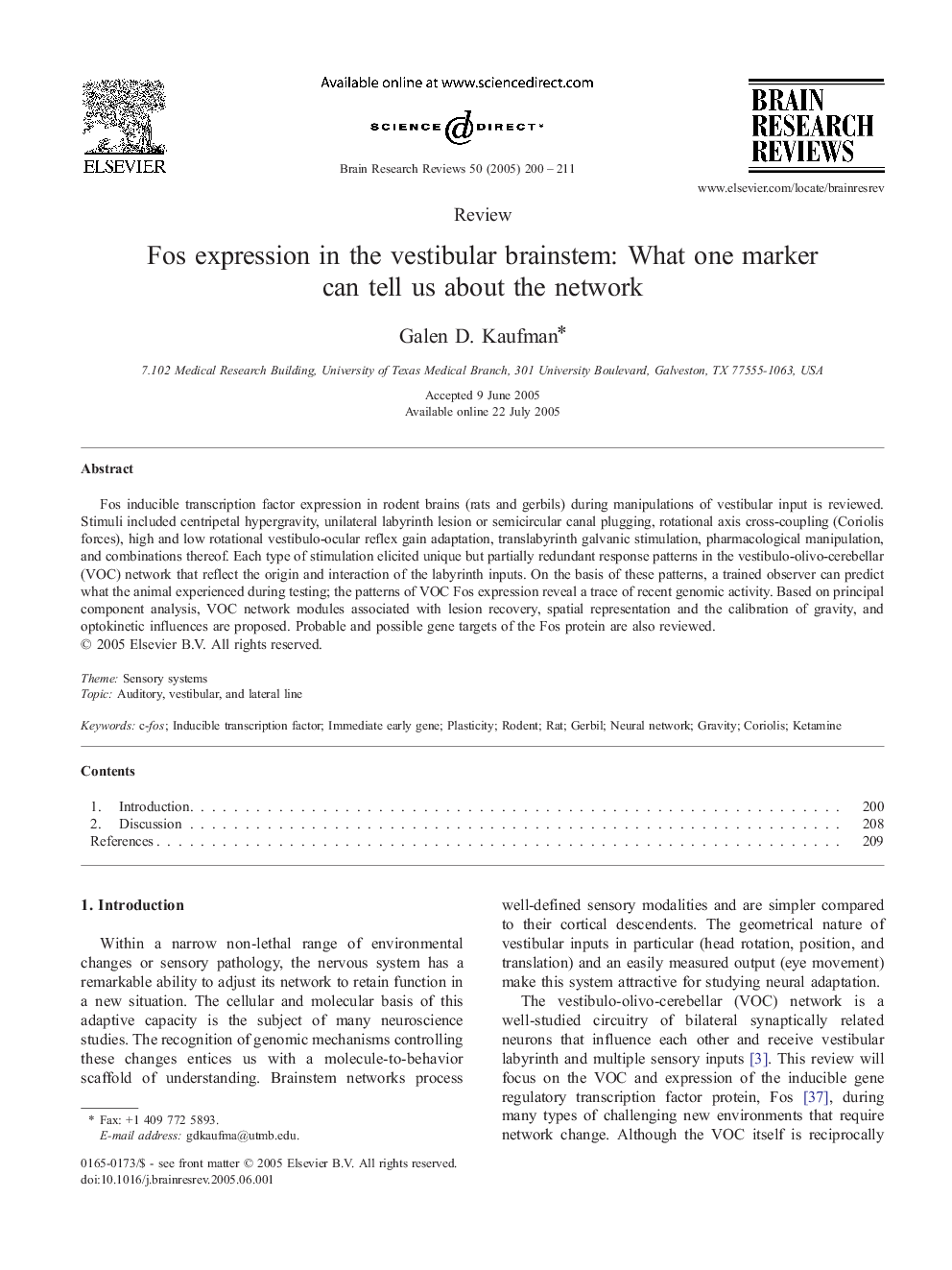| Article ID | Journal | Published Year | Pages | File Type |
|---|---|---|---|---|
| 9423054 | Brain Research Reviews | 2005 | 12 Pages |
Abstract
Fos inducible transcription factor expression in rodent brains (rats and gerbils) during manipulations of vestibular input is reviewed. Stimuli included centripetal hypergravity, unilateral labyrinth lesion or semicircular canal plugging, rotational axis cross-coupling (Coriolis forces), high and low rotational vestibulo-ocular reflex gain adaptation, translabyrinth galvanic stimulation, pharmacological manipulation, and combinations thereof. Each type of stimulation elicited unique but partially redundant response patterns in the vestibulo-olivo-cerebellar (VOC) network that reflect the origin and interaction of the labyrinth inputs. On the basis of these patterns, a trained observer can predict what the animal experienced during testing; the patterns of VOC Fos expression reveal a trace of recent genomic activity. Based on principal component analysis, VOC network modules associated with lesion recovery, spatial representation and the calibration of gravity, and optokinetic influences are proposed. Probable and possible gene targets of the Fos protein are also reviewed.
Keywords
Related Topics
Life Sciences
Neuroscience
Neuroscience (General)
Authors
Galen D. Kaufman,
